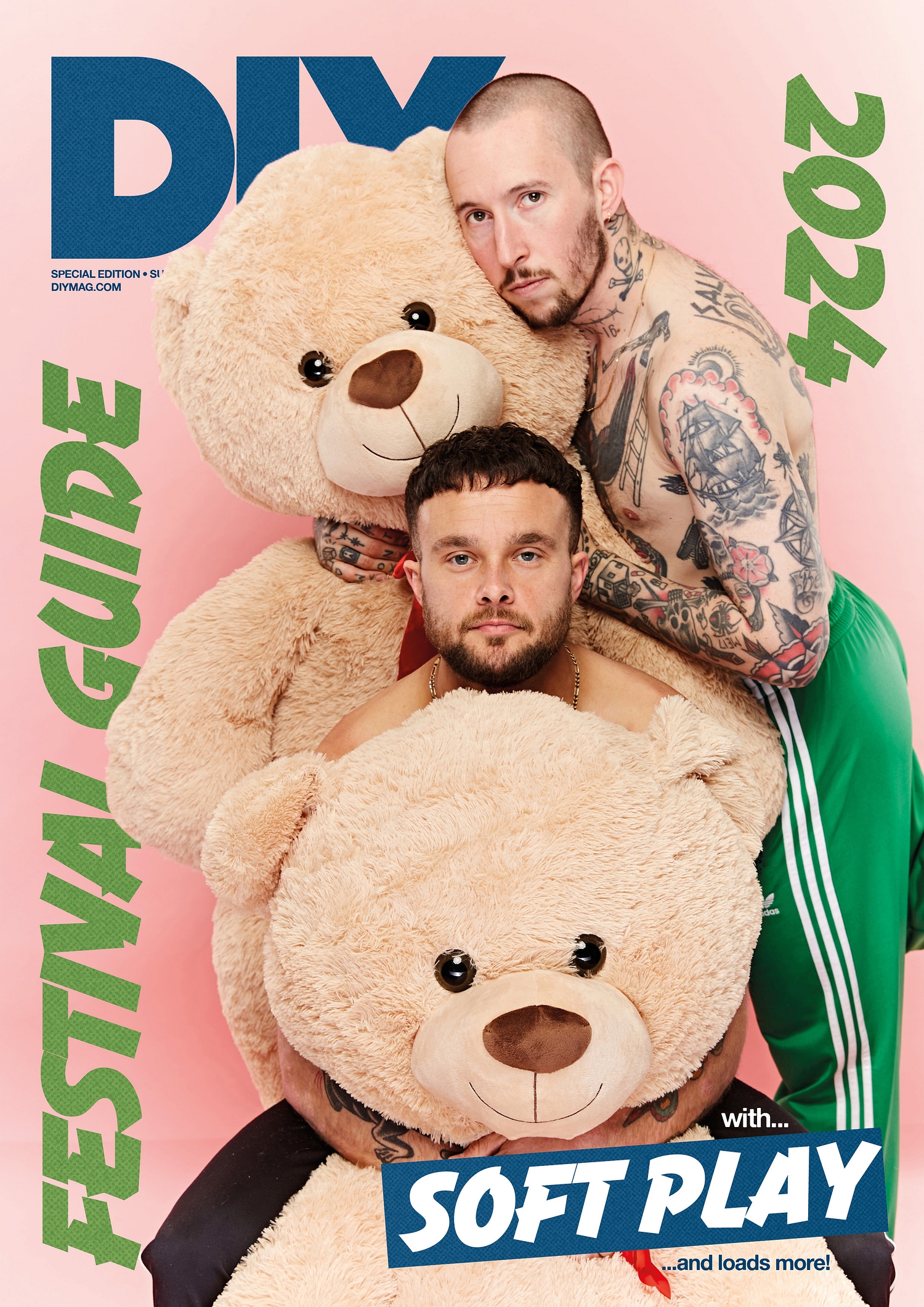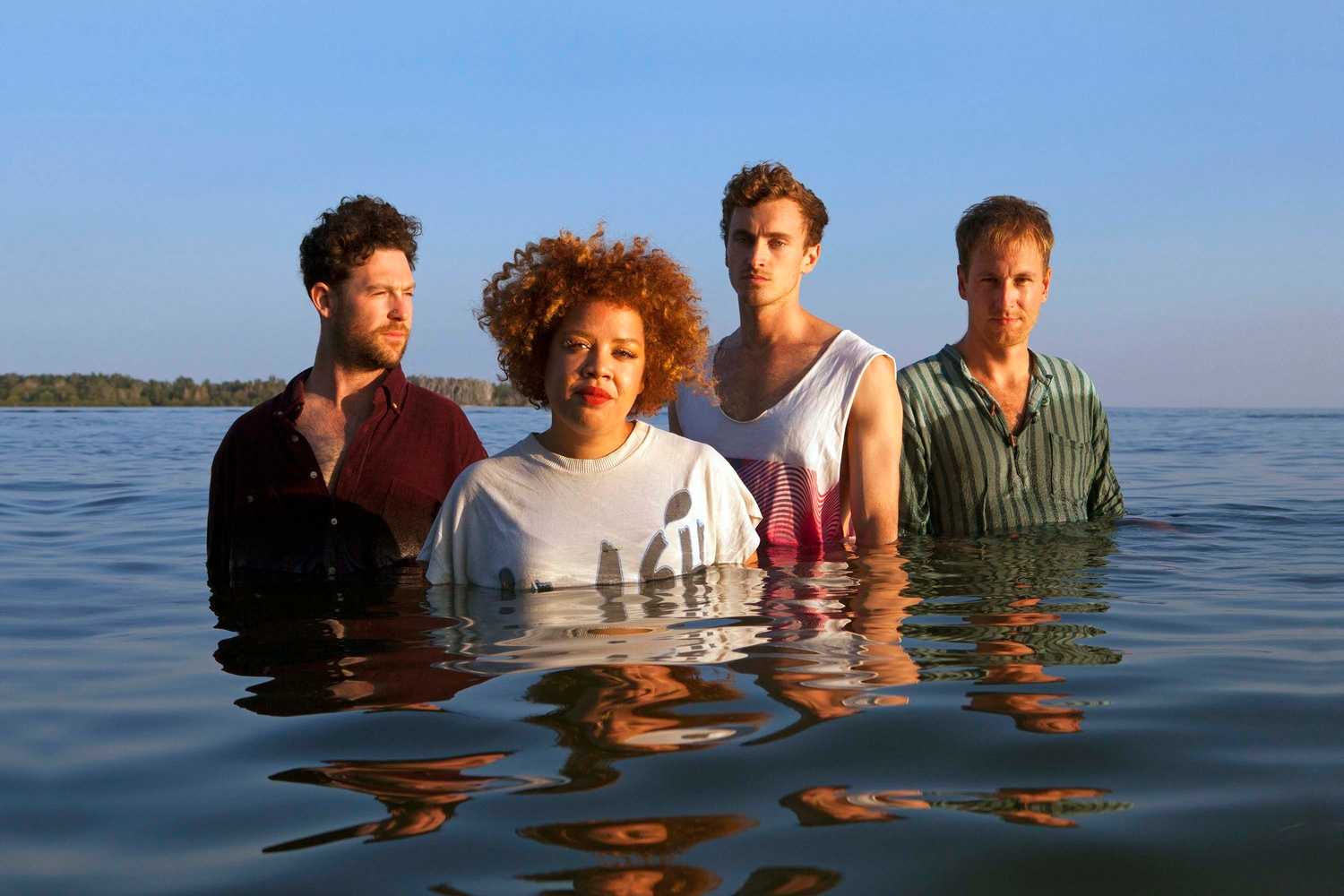
Interview Making Weaves
Difficult second album? Hardly. A year on from their debut, the Canadian odd-pop wonders are back with even more genre-bending anthems and an emotionally open approach to songwriting.
Talking to Weaves’ Jazz Burke and Morgan Waters with the help of modern day technology (a three-way phone call, to be exact), there’s a sudden sharp, piercing tone backed by a combination of rustling and percussive clatter. “Where are you? Are you shopping?” Morgan asks, a little perplexed. “I’m on the bus!” Jazz exclaims. It turns out she’s heading to a shopping centre an hour and a half away from Toronto. “Little adventures are good!” she enthuses.
Little adventures are indeed good, but the adventure that Weaves have embarked on following the release of their explosive, genre-bending self-titled debut has been frankly massive. They spent nearly a year on the road. As soon as they returned home though, getting a well-deserved rest wasn’t the first thing on their minds. “After sitting in the van for so long, I think we were like ‘let’s be creative now, let’s do this!’ You kind of get antsy to get creative, and we just did it,” Morgan says. “You just get excited to come up with new material,” Jazz explains.
“New” for Weaves never means simply replicating what’s come before either. Even from the off, the production of what would become their second album ‘Wide Open’ was characterised by a willingness to keep things fresh. While much of the first record had been written using a loop pedal and phone memos, this time round Jazz added to her technique, using acoustic guitar without being tutored. It turned out to be a fruitful test, which helped fuel the creativity of the overall album. “You have to kind of trick your brain into thinking of something fresh, so not having a tutor helped me think of things differently and not get bored playing the guitar,” she explains. “It was a fun experiment!”
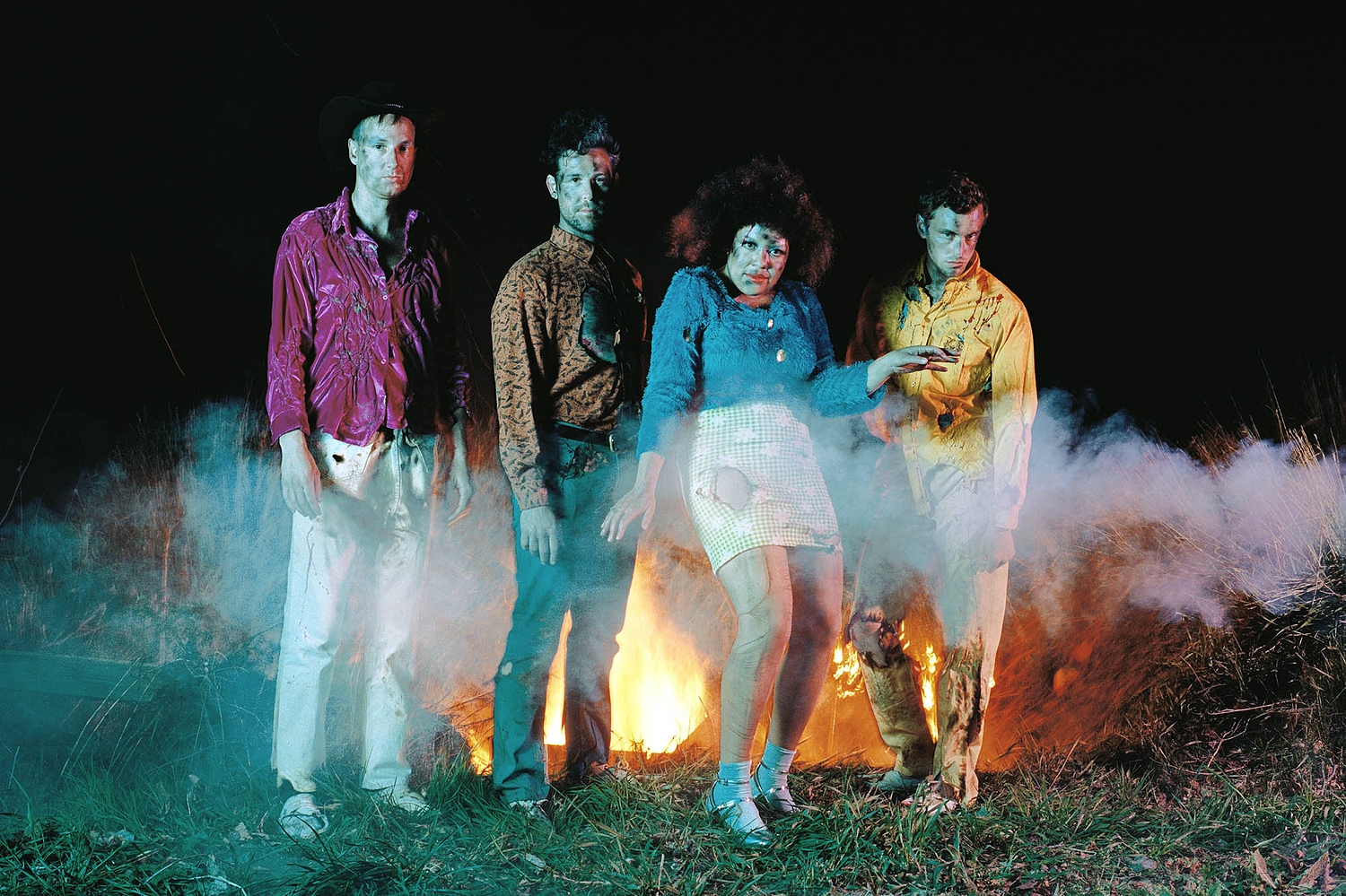
“It’s my debut tap performance!”
— Jazz Burke
As its title suggests, ‘Wide Open’ also marks yet another distinct shift in Jazz’s writing style. “You have these interactions with people and it sort of inspires you to be more human,” she says. Here, she puts her own humanity on display, starting as she means to go on with the record’s frank first line: “I was a stranger inside of my own body.” As a result, it’s an album where her lyrics explore a huge range of sentiments, reflecting the inner conflicts that can come with chaotic times. “You’re touring and you’re having fun, but then something like the [US] election happened,” she reflects. “I think a lot of people are feeling extreme emotions.”
While she didn’t have any preconceived notions of precisely what to express (“that’s the case with a lot of writing; you don’t really know what you feel until afterwards”), just trying to be honest and connect with the listener was something that became an important focus. “It was just trying to figure out ways to express my emotions in ways that are more relatable to people, and not use loads of metaphors. I didn’t want to hide.” Morgan believes that being on the road helped instil the confidence needed to be so frank. “It’s scary to be direct. You put yourself more on display by making yourself more direct, so I think it was just confidence.” “Everything’s really raw and open,” Jazz adds. “I think that we wanted it to be open and free.”
This sense of candidness at first lead the pair to describe ‘Wide Open’ as their “Americana album”. “I guess with the Americana thing, [it’s because] the songs are more direct,” Morgan ruminates. “We tried to keep some of those elements in, even when the songs don’t sound like that at all. It was emotion first.” But this is Weaves we’re talking about. Musically, the record couldn’t simply stay with the “little more earthy” sound Morgan describes. “The further down the line we went with the record, there were things that don’t fit with that world,” he explains. True to their ethos of going with the flow, even the Americana-tinged pedal steel that characterises the title track was born from an opportunist moment. “My friend was just in the next studio over and I was like ‘come on over’ and twenty minutes later we had pedal steel,” he reveals.
“It’s impossible to put a genre on our music. We’re never going to lose that.”
— Morgan Waters
So sure enough, ‘Wide Open’ is just as expansive, off-kilter and adamant not to be placed in a neat little box as its predecessor. Much like the album cover - where the band stand in vibrant clothes that are scorched by flames and smeared with dust – it’s a mix of glitzy and winningly ramshackle, channelling everything from glam and garage rock to punk and torch songs, packing in more than a few killer pop hooks along the way. Each track is anchored by Jazz’s increasingly confident vocals, but differentiated by an increasingly unbridled determination to experiment. “We don’t just ever want to stick to one genre, as that would just be boring,” the vocalist says. “The way people listen to music now, you don’t have to identify with a particular sound.” “It’s impossible to put a genre on our music,” Morgan states. “We’re never going to lose that.”
Trying to bend even more genres than you can shake a really long stick at means that the band have also taken in a few more instruments to further propel ‘Wide Open’ into anthemic territory. A couple of these are pretty traditional – the steel pedal, a glockenspiel – but others are straight out of left field. “Jazz really wanted to tap dance, so we found a space for that on the record,” Morgan bursts out. “Yes, I’m very excited about tap dancing,” she gleefully responds. “It’s my debut tap performance!”
Sure enough, listen closely to ‘Scream’ and you can hear the click-clack of tap shoes, but that’s not the only unique element of the track; they also enlisted the help of Inuit throat singer Tanya Tagaq. Jazz recalls that the experience was “very intuitive and emotional,” and that they had more in common musically than you might first expect. “She’d done it in two takes,” she explains. “I don’t think she really thinks about it too much either,” Morgan adds, “so it was kind of a good match that way.”
“People are very invested in watching us play live, so we kind of feed off their energy.”
— Jazz Burke
Tanya’s involvement in the record brings up an intriguing question though: as they prepare to hit the road once more in support of their new record, will Weaves be trying to emulate her guttural tones? “We’ll figure it out,” Morgan says. He refuses to have her performance on a loop, instead endeavouring to do something a little more organic and out of the ordinary (of course). “I’m sure we can supply our own little insanity,” he wryly ponders. You wouldn’t really expect anything less, and for anyone wondering whether Weaves will be constantly try to morph ‘Wide Open’ into all kinds of new and dynamic shapes on the road, he has a simple, definitive answer. “Oh yeah.”
“I think our band would not be able to tour much without a little bit of experimenting,” Jazz claims. “We recorded the songs really fast so we’re all still essentially learning the songs, but it’s more fun when you can have fun with the songs on stage. At least then when people see you more than once on stage they’re not like, getting bored or something!”
It’s the reaction and vigour of a live audience that helps keep Weaves energised when they’re on the road. “People are very invested in watching us play live, so we kind of feed off their energy,” Jazz states. Morgan believes that the reaction of a crowd spurs them on to find new ways to surprise even the most avid of fans: “The audience can be involved in the creation of it,” he extrapolates. Even when they get into a free-flowing grove though, they’re a band who instinctively know how to bring it all to a rousing climax: “That’s the nice thing, everyone’s really good at improvising and then bringing it back.”
It’s the spirit of going with the flow and letting intuition guide the process that’s a defining factor in what makes ‘Wide Open’ such an engaging listen. “We don’t ever overthink things,” Jazz says. “Nothing would get done,” she chuckles. “Nothing’s really thought out, and then we look back and are like, ‘should we make up a masterplan, some reason why we did this?’” Morgan adds. “But the truth is, we didn’t.” When Weaves can excite without ever needing to stick to a formula though, you hope the rulebook stays firmly torn up. As for where they go next? Naturally, that’s wide open.
Weaves' new album 'Wide Open' is out now.
Photo: Samuel Engelking.
Taken from the October 2017 issue of DIY. Read online or buy below.
Records, etc at

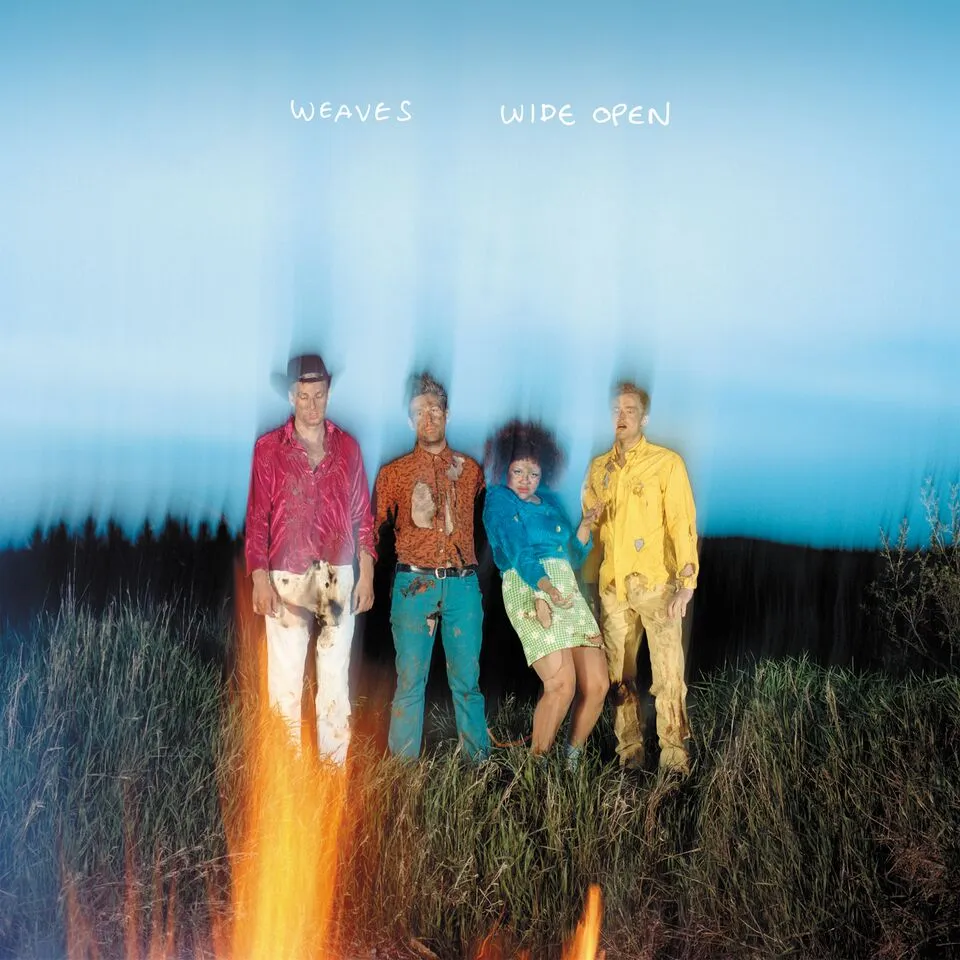
Weaves - Wide Open (Vinyl LP - white)

Weaves - Wide Open (Cd)
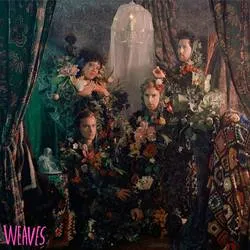
Weaves - Weaves (Cd)
Read More
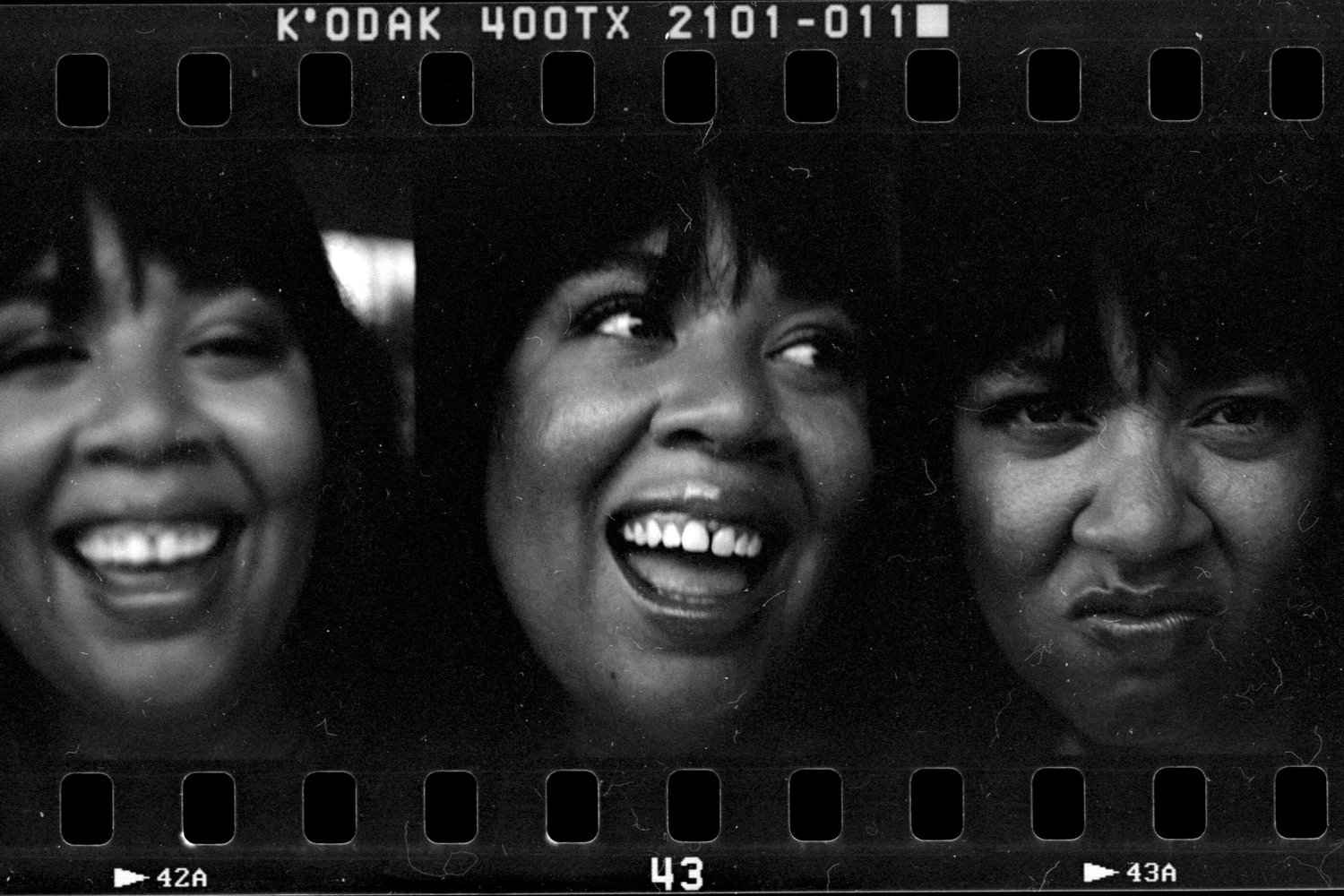
Jasmyn releases new track ‘Find The Light’
The former Weaves frontwoman has inked deals with ANTI- and Royal Mountain.
11th November 2021, 12:00am

Watch Weaves cover Arcade Fire’s ‘Neighborhood #3 (Power Out)’
The band released second album 'Wide Open' late last year.
9th May 2018, 12:00am
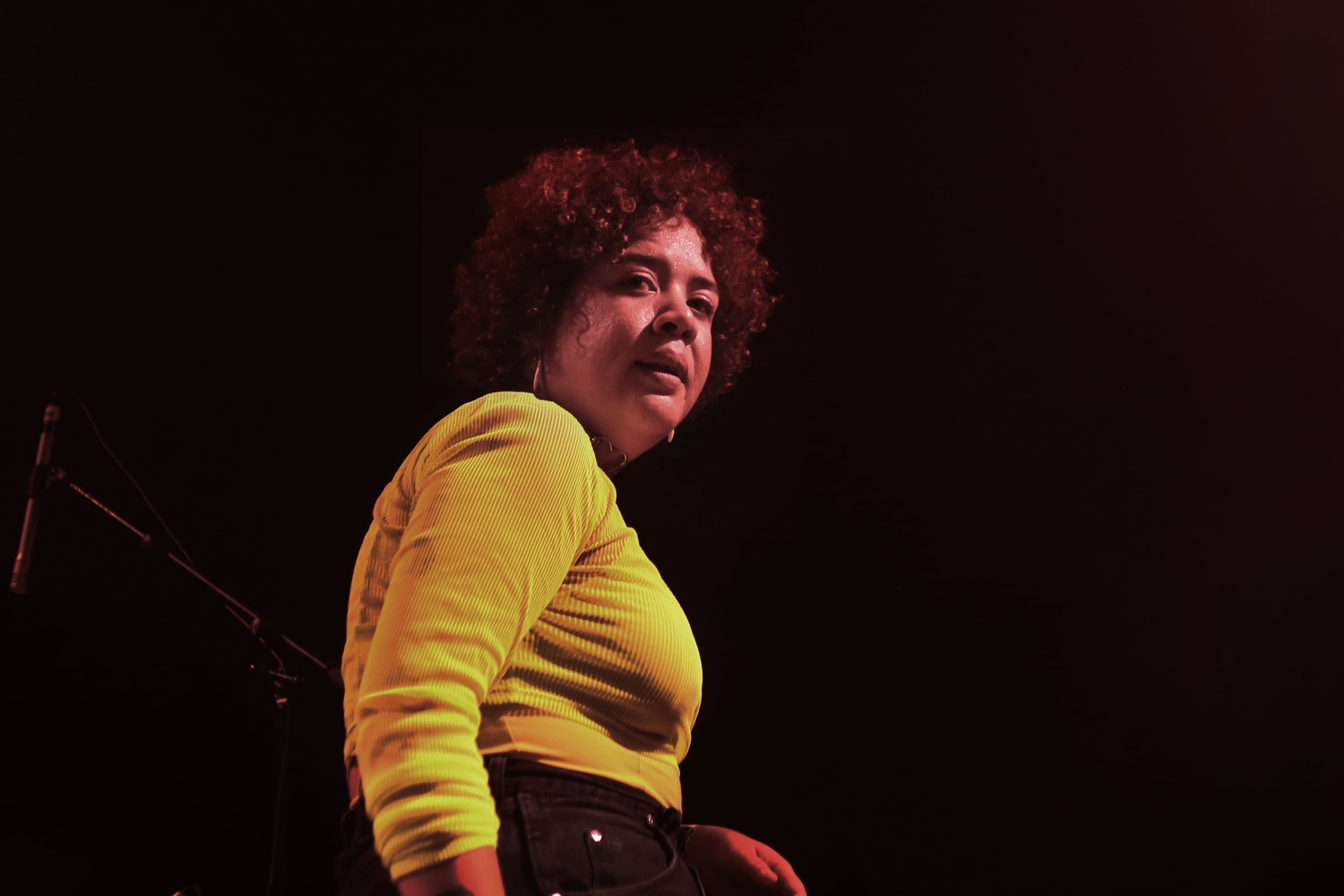
Weaves, LIFE, Yak and more set Amsterdam ablaze at London Calling
Celebrating its 25th anniversary, the always-on-point event did itself proud
31st October 2017, 12:00am
Weaves get sporty in their ‘Slicked’ video
The band's second album 'Wide Open' came out last week.
9th October 2017, 12:00am
Featuring SOFT PLAY, Corinne Bailey Rae, 86TVs, English Teacher and more!
